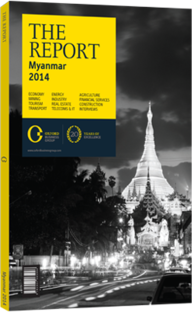Gaining momentum: Unlocking potential in hydroelectric power is a multifaceted challenge
Few issues stir as much interest in Myanmar as hydroelectric power. For some, the significant number of potential dam sites are untapped opportunities to bring the country into the developed world, while for others, hydropower projects challenge the preservation of traditional cultures, ecosystems and homelands.
Background
In a 1995 World Bank study, Myanmar’s rivers were noted as having the potential to host 266 dams that could produce up to 108,000 megawatts (MW) of power. That compares to 19 dams operating in 2013 with a capacity of 2660 MW. The former military regime was eager to exploit the untapped potential, producing a 30-year plan that called for 43 additional dams with more than 40,000 MW of capacity. The military inked deals with Chinese, Thai and Indian firms to finance and build most of those projects, but at a price. Most of the power, 90% in many cases, would be exported. In return, Myanmar would receive its share of the power cheaply or even free of charge, plus cash revenues. That would have allowed the regime to expand electricity supply, while continuing an old tradition of supplying industry and households with power at below cost. After the expiration of the contracts, usually 50 years, the dams would become state property.
Plans & Issues
The largest such project, called Upstream Ayeyawady Confluence Basin Hydropower (UACBH), consisted of eight dams with a combined capacity of almost 20,000 MW. Led by China Power Investment Corporation, the project has strong backing from the Chinese government and authorities in Yunnan province, which borders Myanmar to the northeast. However, the first dam in the project, the 6000-MW Myitsone Dam on the upper Irrawaddy River, became a focus of opposition to large-scale hydropower. As the military regime turned over power to a new civilian government in 2011, a “Save the Irrawaddy” campaign was growing, with support from recently released opposition leader Daw Aung San Suu Kyi. Armed rebels were blocking trucks from delivering construction materials and were suspected of having been behind a grenade attack on the dam site in 2010. As military leaders warned they were prepared to launch an assault on the rebels, the new president, U Thein Sein, stepped in to defuse the tensions, announcing that work on the Myitsone Dam would be suspended for the rest of his term. Since then, none of the many export-oriented dam projects initiated under the military regime have gone forward. However, the UACBH’s backers have made clear they will try to revive the project after the next presidential elections in 2015. Myanmar’s government is also working on reviving other export-oriented dam projects sooner than that.
Future
One of the main issues shaping hydropower development, both in Myanmar and globally, is climate.
The monsoon season, which generally lasts from mid-May to mid-October in Myanmar, creates key hurdles for generating energy in that capacity is either reduced or stops altogether. Likewise, the dry season, which runs from December through to March, means there is insufficient water for dams to generate at full capacity. While regulating dams to produce a steady amount of electricity could be a solution, similar problems faced by China have shown that this creates downstream wet season flooding and dry season water shortages.
Future demand will be two-pronged. The construction of smaller, lower capacity dams is expected to target the growing energy needs of households, while the development of larger dams will feed the appetite of Myanmar’s hungry neighbours, though how the country addresses the climate factor will be a key test.
Hydropower is not Myanmar’s only option for development, as evidenced by Thailand, which consumes more than 20 times as much electric power as Myanmar with only 6% coming from dams. However, the much lower long-term costs of hydropower make it an attractive option that Myanmar is unlikely to completely forego. With market reforms to incentivise domestic supply, greater transparency in public budgets and stronger local government, many of the current reasons for opposition to hydropower could fall away.
You have reached the limit of premium articles you can view for free.
Choose from the options below to purchase print or digital editions of our Reports. You can also purchase a website subscription giving you unlimited access to all of our Reports online for 12 months.
If you have already purchased this Report or have a website subscription, please login to continue.

